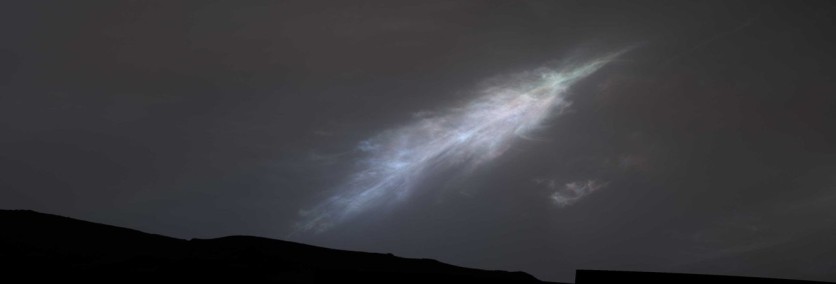NASA's Curiosity rover has captured a stunning image of the Martian sunset featuring "crepuscular rays," or sun rays, illuminating a bank of clouds. This is the first time that sun rays have been seen so clearly on Mars.
The image was taken during Curiosity's newest twilight cloud survey, which aims to understand Martian weather patterns and the composition of the planet's atmosphere.

Cold Martian Clouds
The clouds in the latest images appear to be at a higher altitude, where it is particularly cold, indicating that they are made of carbon dioxide ice or dry ice. Martian clouds, like Earth's, provide crucial information for understanding the planet's climate and weather patterns.
By studying when and where clouds form, scientists can learn more about the Martian atmosphere's composition, temperatures, and winds.
In 2021, Curiosity's cloud survey included more imaging by its black-and-white navigation cameras, providing a detailed look at a cloud's structure as it moves.
However, the current survey relies more often on the rover's color Mast Camera, or Mastcam, which helps scientists see how cloud particles grow over time.
The ongoing surveys of Martian clouds are essential to understanding the planet's climate and weather patterns, which could eventually facilitate human exploration of Mars. With this knowledge, researchers can make informed decisions about potential landing sites and resource availability.
Read also: Garbage on Mars: Over 15,000 Pounds of Human Trash Pile up on the Red Planet, Researcher Says
Feather-shaped Colorful Clouds
In addition to the image of sun rays, Curiosity captured a set of colorful clouds shaped like a feather on January 27. Certain types of clouds can create a rainbow-like display called iridescence when illuminated by sunlight.
Continued study of Martian clouds is important for expanding our understanding of our neighboring planet and its potential for future exploration.
"Where we see iridescence, it means a cloud's particle sizes are identical to their neighbors in each part of the cloud," Mark Lemmon, an atmospheric scientist with the Space Science Institute in Boulder, Colorado, said in a press release statement.
"By looking at color transitions, we're seeing particle size changing across the cloud. That tells us about the way the cloud is evolving and how its particles are changing size over time."
Each panorama that Curiosity took of the sun's beams and the iridescent clouds was created by stitching 28 photos that were delivered to Earth. The images have been processed to feature striking highlights, according to NASA.
In related news, NASA's Mars Reconnaissance Orbiter (MRO) recently photographed unusual sand dunes on Mars with striking round shapes using its High-Resolution Imaging Experiment (HiRise) camera.
Related Article : NASA's James Webb Space Telescope Zooms in on Mars for the First Time, Capturing Stiking Martian Details!

ⓒ 2026 TECHTIMES.com All rights reserved. Do not reproduce without permission.




